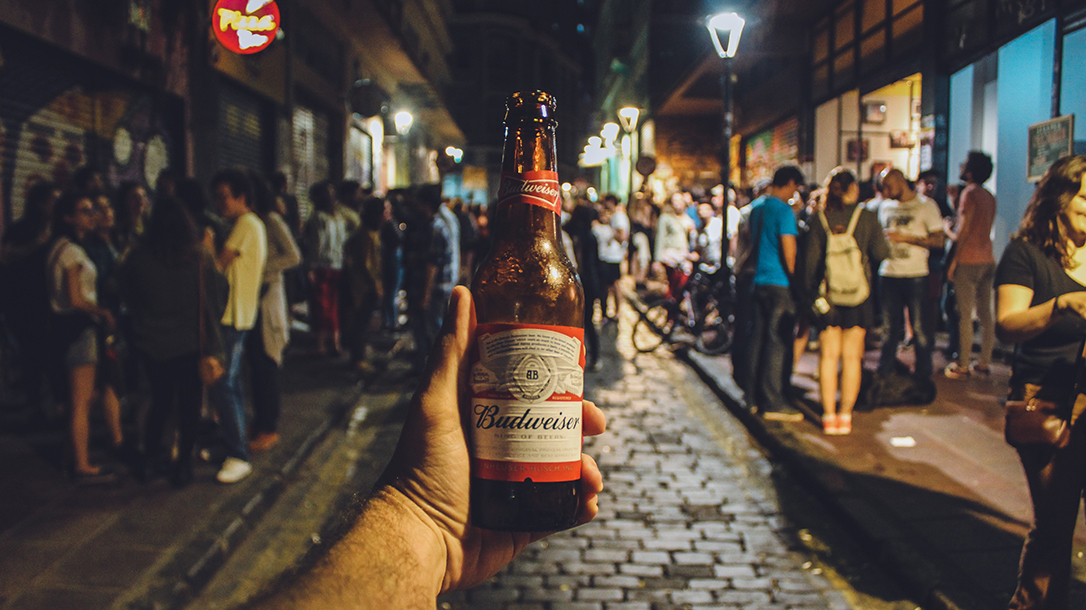Beer has been called the nectar of the gods and is as much a part of worldwide culture as any other item. By most accounts, beer was discovered as many as 8,000 years ago by the Sumerians. During the next eight millennia, beer became more refined as man moved from hunter-gatherer to an agriculture-based life. The mastery of growing grains led to their use in an endless variety of early beer styles.
These lessons were passed down through time and throughout the world, from the Sumerians to the Babylonians to the Greeks until finally the English. The recipes and methodology were advanced and improved until we saw the beer styles we enjoy today.
Advertisement — Continue Reading Below
Generally, beer is made from malted barley, hops, yeast and water. Sounds simple enough, but a visit to any serious bar will launch a headache as you’re inundated with a wall of beer choices.
So, “Isn’t beer just beer?” Say that around a serious beer connoisseur and they will look at you like you kick kittens. We don’t want to start an international incident or insult the local brew master, so I have put together a small cheat sheet of what the heck it all means.
I realize there are subcategories followed by even more subcategories, but for the sake of general information, let’s keep it as simple as possible. So grab a napkin and take some notes.
Advertisement — Continue Reading Below
For lack of a better organizational structure, I will break down beers by their style. This is the easy part because there are only two styles of beer: ales and lagers. For some, this will be enough beer trivia to get them through outings with friends.
We can go deeper into the rabbit hole, though. It’s the type of ales and lagers that tend to make people’s eyes glaze over. So, if you are more serious about digging deeper, let’s break the beer styles down even further. First, let’s look at ales.
Beer Styles: Ales
Pale Ales
These are generally gold with a crisp flavor. One of my favorites is Han Brolo from Monday Night Brewing in Atlanta, Ga. It has a fruity kick and isn’t heavy.
Advertisement — Continue Reading Below
India Pale Ales
This beer is a testament to how much the British love their beer. IPAs came to be because beer shipped to soldiers in India rarely made it without spoiling. But, with an increase in alcohol content and hops, the beer could survive the long trip. Today, that formula has improved, but IPAs are still known to be very hoppy. A winner in this category is Hop Hunter from Sierra Nevada Brewing. It’s very aromatic and perfect for those in love with IPAs.
Ballistic’s Digital Content Director, Matt Hogan, is a self-proclaimed “IPA guy.” His go-to is Hop Damn! from the Long Island-based Barrier Brewing company. Not only is it his favorite for taste, but it’s also a collaboration with his favorite metal band: Every Time I Die.
Wheat Beer
Wheat beers have their roots in Bavaria and are light colored and full flavored. Hoegaarden makes a great one that comes from the namesake Bavarian village where folks have been making beer since 1445. They’ve mastered the process.
Advertisement — Continue Reading Below
Brown Ale
These beers have a strong, malty taste and can be nutty. They are what I would call a medium-bodied beer with a balance of deep flavor and lightness. A good one in this area is pretty well known. Newcastle has enjoyed retail success because it tastes good.
Stout
As the name suggests, these beers are hearty and rich. Often called dark beers, they are generally thick and almost black. My all-time favorite in this category is Guinness. It’s a full-flavored stout that, although rich, isn’t overburdened with fruit or other fad flavors.
Advertisement — Continue Reading Below
Porter
These are like stouts in many ways but tend to be a little sweeter and with a broader range of flavors. A unique choice in this arena is the Maple Bacon Coffee Porter from Funky Buddha. Its description is spot-on: “Evoking a complete diner-style breakfast in a glass, it is a complex beer with a multitude of flavors at play.” It’s a unique experience and worth a try.
Hefeweizen
Although technically a wheat beer, these are brewed with equal parts wheat and barley, malts and few hops. This produces a cloudy light beer that can have a fruity taste. They are commonly served with an orange or lemon wedge. One of my favorites here hails from New Jersey. Blonde Hefeweizen from Ramestein has a good balance of fruity cloves with vanilla flavor.
Beer Styles: Lagers
Our second major category of beers is lagers. I hate to say that these are the most common beers because it sounds pretty pedestrian. These are full-flavored beers that have enjoyed great commercial success. Names such as Budweiser, Coors and Yuengling dominate this space, with many other smaller breweries making great beer. This is the type of beer that most people think of when it’s “Miller time.”
Advertisement — Continue Reading Below
American Lagers
These are pale lagers that are obviously produced in the United States. Originating in Europe, German immigrants eagerly brought them to America. These beers tend to be fairly light in body yet full flavored. My call in this category is Budweiser, with its classic American taste and strong representation of true Americana.
Amber/Red Lager
These tend to be darker than other lagers and have a deeper flavor. My go-to in this field comes from America’s oldest brewery, Yuengling. Its Traditional Lager is famous for its rich amber color and medium-bodied flavor, with roasted caramel malt for a subtle sweetness and a combination of cluster and cascade hops.
Bock
These beers tend to be full bodied and darker. Traditionally, they are brewed in fall and are synonymous with cooler temperatures. The beer I think of in this category is Sam Adams Winter Lager. It’s a true bock, but not quite as heavy as others in this class. It’s very tasty and a great addition to a meal.
Advertisement — Continue Reading Below
Oktoberfest
Like Bocks, these beers are usually brewed seasonally. In this case, they are brewed in spring and stored to serve in autumn. They have a strong malt flavor and a touch of sweetness, making tasty beer. My go-to here is the German lager Spaten. It’s golden with a well-balanced hop flavor and a hint of citrus.
Pilsner
We’ll wrap this up with what is simply the world’s most popular style of beer. Born in Pilsen back in 1842—now part of the Czech Republic—it’s a crisp, light-colored beer with a smooth, clean taste. It’s one of my favorites. The choices in this category are endless, but I will go with Beck’s as my go-to. It’s everything I think of when I hear “pilsner.”
After Hours
If this summary of beer styles has whetted your appetite, I encourage you to visit your local brewery for a tour. Better yet, seek beer festivals where you can get enough information to make this list look like a short note.
Advertisement — Continue Reading Below
Beer is part of our culture, and it’s growing. Home brewing is a major thing, and beer is one of the few things that survives regardless of economic times.
And if I can offer some advice: Try some different beers. We tend to be creatures of habit. Those habits can get in the way of enjoying some of the best life has to offer.
This article is from the fall 2018 issue of Ballistic Magazine. Grab your copy at OutdoorGroupStore.com.


























